Review of Kagemusha
Introduction
I have a computer game, an intricate strategy game called, Shogun: Total War. It starts with a memorable piece of FMV taken from Ran by Akira Kurosawa. It`s a brilliant historical strategy game set in the Sengoku Jidai (The Age of the Country at War) period of 16th Century Japan. You play one of seven daimyo, fighting to become Shogun. The game is based on history, with historical characters like Shingen Takeda, Nobunaga Oda and Ieyasu Tokugawa all prominent. Imagine my delight, when I realised these characters have already been prominently portrayed in another Kurosawa epic, Kagemusha, or The Double. Now I must point out that the game and film aren`t in any way related, it`s just one of those delicious coincidences that I revel in.
It is 1573, and the battle for supremacy in Japan rages on between three clans, the Takeda, Tokugawa and Oda. Shingen Takeda leads his clan, and he is known as The Mountain for his formidable prowess as a warrior and implacable strength of will. His brother Nobukada often doubles for him as a safety measure and to confuse and misinform his enemies` spies. Nobukada however has found the perfect double in the shape of a lowly thief, and with Shingen`s permission is grooming him for a superior deception. Their plans are thrown into disarray when a Tokugawa sniper mortally injures Shingen Takeda during a castle siege. Aware that the clan cannot complete the conquest of Japan without him and wishing to preserve the clan`s holdings, Shingen Takeda`s dying wish is that the Takeda retreat and hold firm for three years. Shingen`s brother and advisors hastily install the Kagemusha as clan leader to maintain the fiction of firm leadership and stop the army`s morale from dropping. The Kagemusha finds himself thrust into a role he rapidly becomes accustomed to, before he understands the responsibility on his shoulders. The Takeda`s problems haven`t ended though, as the Oda and Tokugawa spies bring conflicting reports back to their masters, who are willing to test Takeda`s strange new passivity with attacks of their own.
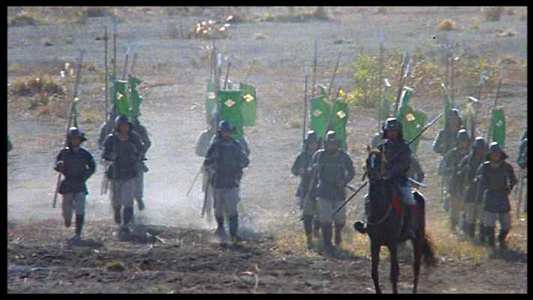
Video
Kagemusha is presented in an anamorphic 1.85:1 transfer. The picture is a little grainy, which I assume is due to the original film stock rather than the transfer itself. There are very few signs of age, the occasional scratch or blip, but otherwise this is a very clean print. Kurosawa`s direction is as always exquisite. The palette is rich and lush with Japan`s beautiful landscapes readily apparent. The same attention has been paid to the sets and costumes, and Kurosawa conveys some powerful imagery. A stream of soldiers marching in front of a setting sun is one such moment that stays in the mind. This film is truly a visual masterpiece.

Audio
You get a DD 4.0 Japanese soundtrack, which is adequate. The music is sparse but powerful and while the action is conveyed well, with the surround channel well used to create atmosphere and accentuate combat scenes, the film is more dialogue heavy, and this is always clear.
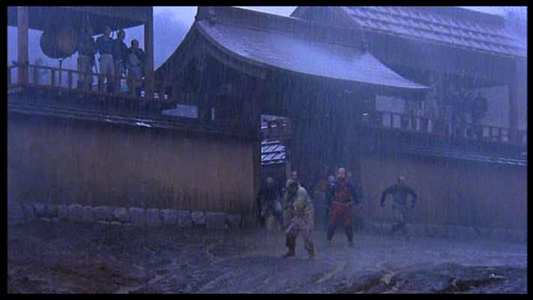
Features
I delayed watching this film, I really wanted to get an idea of Kurosawa himself and coincidentally, the BBC were showing a two part documentary on the man, chronicling his life and career. There were insights into this film that were intriguing and startling and watching the documentary was a good prelude to this film itself. I`m telling you this because if you think that the disc offers any kind of insight, you are sorely mistaken. Aside from the film itself, you are presented with subtitles in English, Danish, Finnish, Norwegian and Swedish. When you are talking about a filmmaker as influential and groundbreaking as Akira Kurosawa you would be justified in expecting some additional material. An opportunity sadly missed I`m afraid.

Conclusion
The first things that struck me about this film were the executive producers, George Lucas and Francis Ford Coppola. Not the names that you would expect to be associated with a Japanese production, but I found it hard to believe that the Japanese film industry had pretty much forgotten Akira Kurosawa in the late seventies and early eighties, to the extent where he had to supplement his income from appearing in whisky commercials. Japanese cinema by now was churning out monster flicks by the dozen and the thoughtful cinema of Kurosawa was considered a thing of the past. Consequently Kurosawa turned to Hollywood for the finance to complete Kagemusha, hence the appearance of Lucas and Coppola in the credits, both of them influenced by Kurosawa. Kurosawa himself was greatly influenced by Shakespeare. Throne of Blood and Ran were both adaptations of Hamlet and King Lear respectively, and you can see the influence of Shakespeare on Kagemusha also. The double in drama is an oft-used device, Shakespeare`s Comedy of Errors a more frivolous example perhaps, but the way Kurosawa constructs dialogue and character is also reminiscent. In Kagemusha, the primary characters carry the powerful drama and narrative, but minor characters, the foot soldiers or the spies, who can also be light-hearted, often supply exposition as well.
Kagemusha is a powerful tale well told. Although it was based on historical events and characters, Kagemusha itself is fictional, but the period it is set in is one of the richest periods of Japanese history. Several clans fought for supremacy in Japan, and into this mix entered the Europeans, bringing Christianity and cannons, selling muskets and harquebuses to whoever would convert. Resulting battles between clans would then be the battle between old and new, as swordsmen and pikemen faced off against musketeers. You can guess who won. This rich tapestry of history is apparent in Kagemusha, and forms the world in which the main characters inhabit. Tatsuya Nakadai is brilliant as the Kagemusha who impersonates Shingen Takeda. He starts of as a lowly thief, rescued from crucifixion for the purpose of impersonation and initially he approaches the deception with the impertinence of his character, but as the masquerade continues, he begins to live the role, and as he becomes more like the original, he finds that he is unable to escape the responsibility of his assumed position. This is the pivotal role of the film and Tatsuya Nakadai is excellent in it. His initial impersonation is dominated by mimicking Shingen`s mannerisms, and it seems false, but this is cleverly done, as when he adopts the mindset of Takeda, this is readily apparent in his performance. The supporting cast is equally impressive, the wily old general, the son sick with jealousy to the equally impressive enemies, the brash and aggressive Oda and the cunning and thoughtful Tokugawa.
Kagemusha is long at 2 and half hours, but it`s time well spent as Kurosawa weaves a rich and intricate story that rewards the viewer. His direction is without peer. The climax of the film is visually stunning. A battle that is told by the observers` reaction alone, there is no explicit combat, but there is the aftermath of the battle which is all the more horrifying for its impact. It`s a meaty tale, set in an age of momentous changes and battles in Japan, but like all good stories, it is the tale told of one man, and as such makes the audience personally involved in the outcome. The disc is strong, in picture and sound quality but falls down on the extras. Akira Kurosawa is rightly acknowledged as a great director. Here`s just one more reason why.
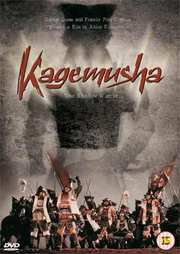

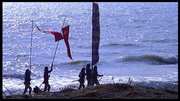

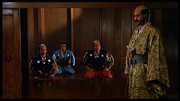
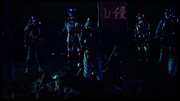
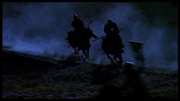
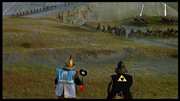
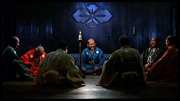

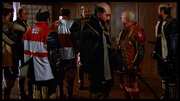
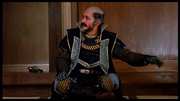
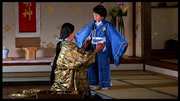
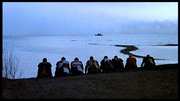
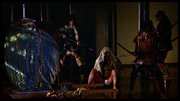
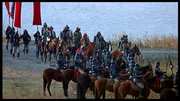
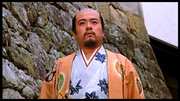
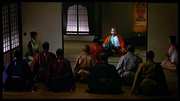
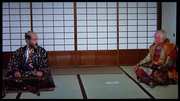


































Your Opinions and Comments
Be the first to post a comment!